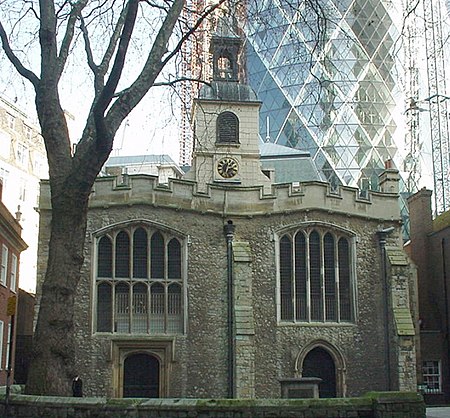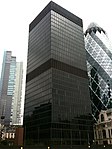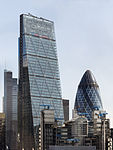St Helen's Church, Bishopsgate

St Helen's Bishopsgate is an Anglican church in London. It is located in Great St Helen's, off Bishopsgate. It is the largest surviving parish church in the City of London. Several notable figures are buried there, and it contains more monuments than any other church in Greater London except Westminster Abbey, hence it is sometimes referred to as the "Westminster Abbey of the City". It was the parish church of William Shakespeare when he lived in the area in the 1590s. It was one of only a few churches in the City of London to survive both the Great Fire of 1666 and the Blitz. Owing to parish consolidation over the years, the parish is now named "St Helen's Bishopsgate with St Andrew Undershaft and St Ethelburga Bishopsgate and St Martin Outwich and St Mary Axe". The Worshipful Company of Merchant Taylors are the patrons of the benefice.Today, it is home to a large congregation in the conservative evangelical tradition with a ministry to city workers, families, students and young professionals. Three English-speaking church services take place each Sunday, as well as a number of midweek talks and small group Bible studies. The nearby churches St Andrew Undershaft and St Peter upon Cornhill are also administered by St Helen's.
Excerpt from the Wikipedia article St Helen's Church, Bishopsgate (License: CC BY-SA 3.0, Authors, Images).St Helen's Church, Bishopsgate
Great St. Helens, City of London
Geographical coordinates (GPS) Address Phone number Website External links Nearby Places Show on map
Geographical coordinates (GPS)
| Latitude | Longitude |
|---|---|
| N 51.5148 ° | E -0.0818 ° |
Address
St Helen's Bishopsgate
Great St. Helens
EC3A 6AT City of London
England, United Kingdom
Open on Google Maps




